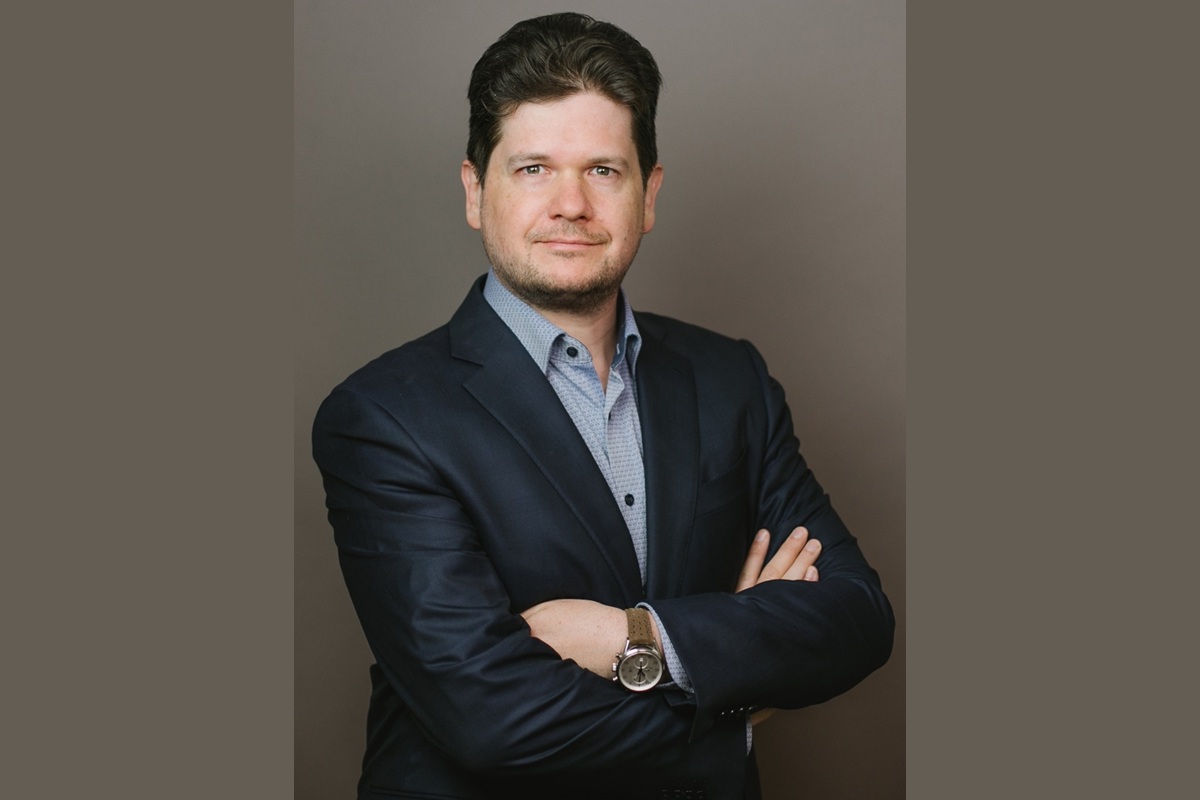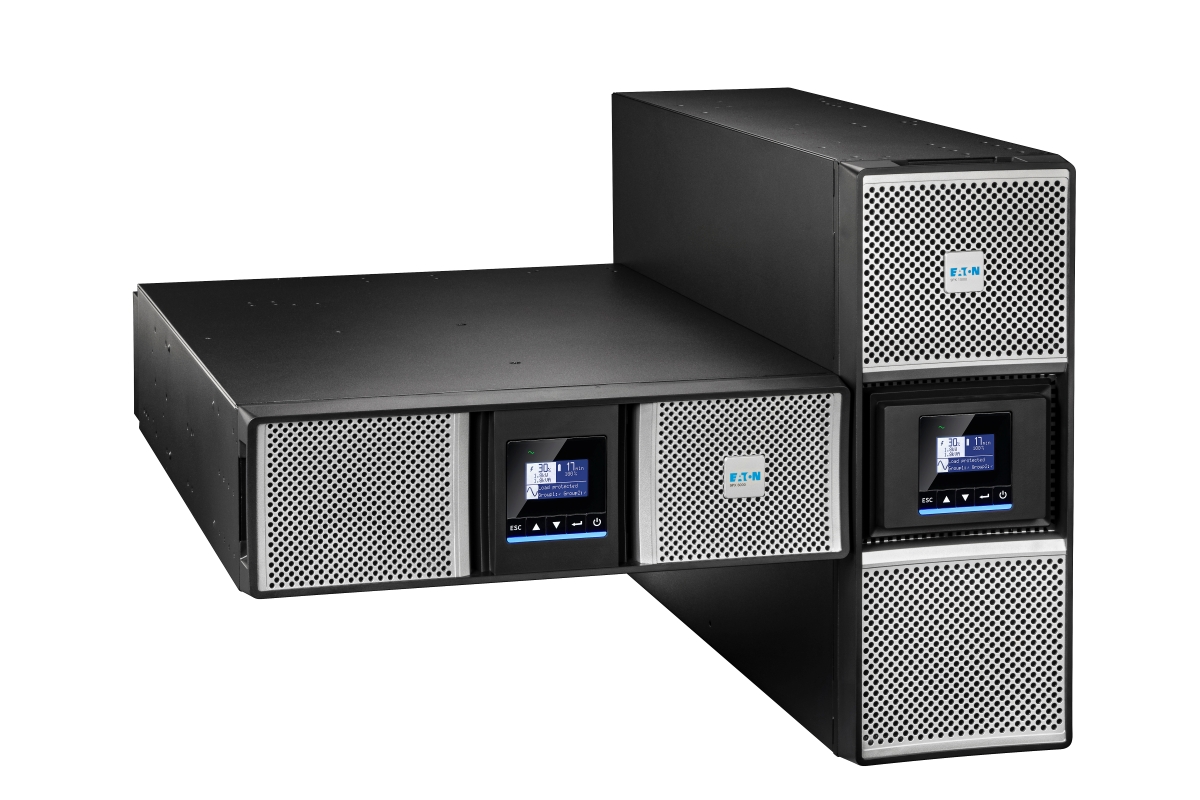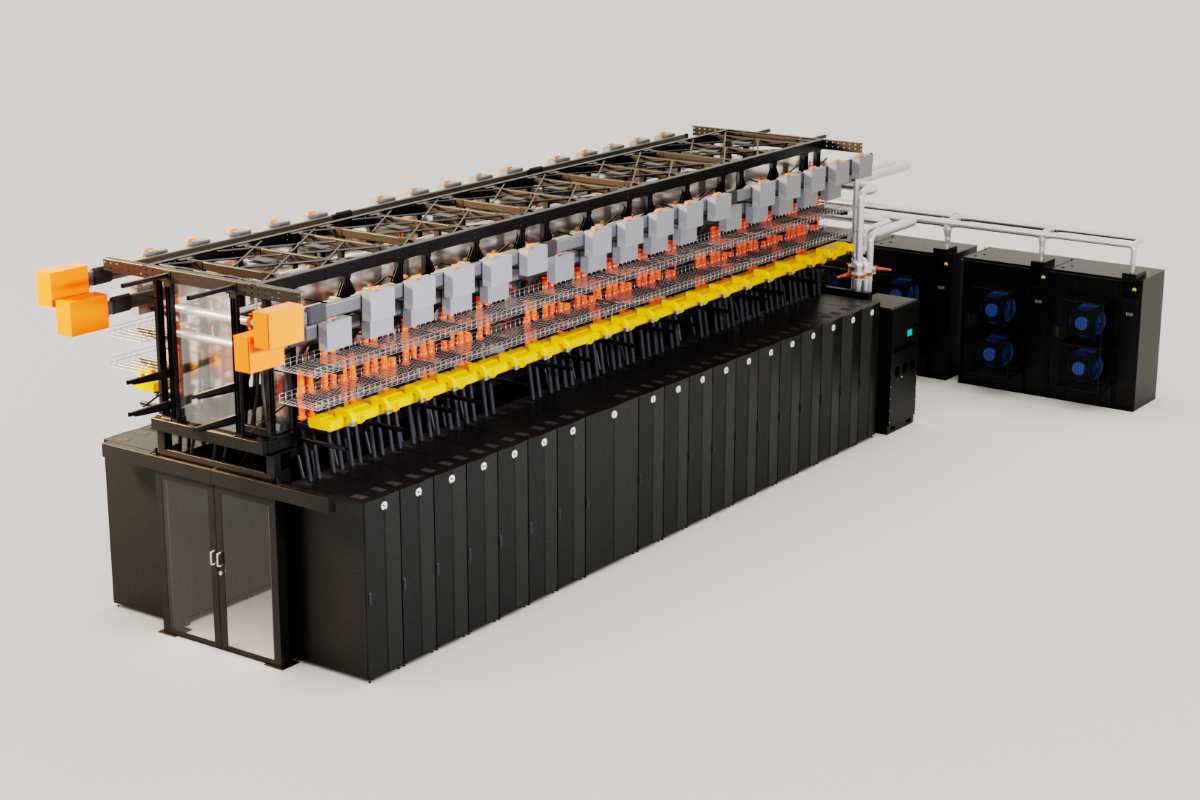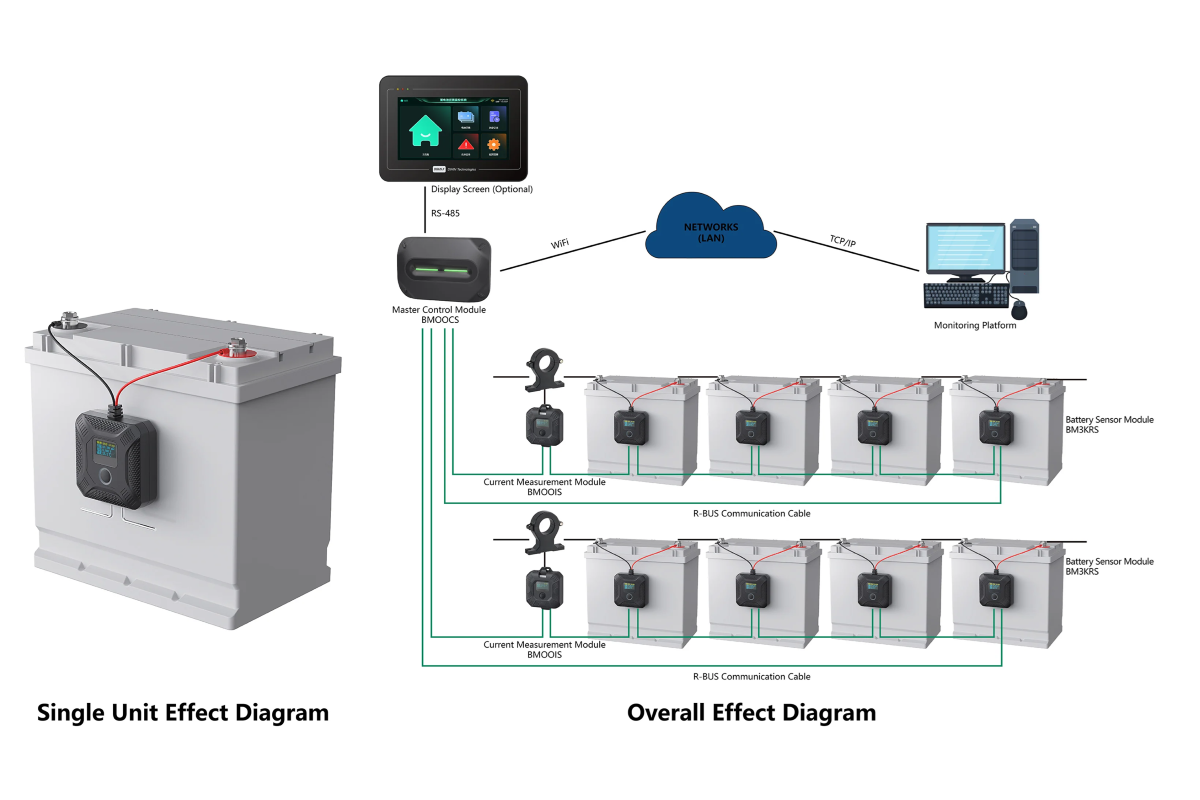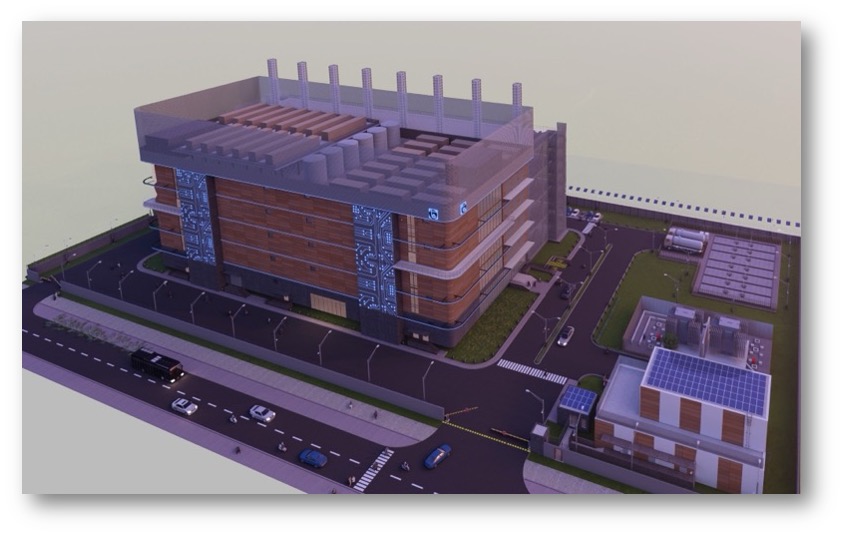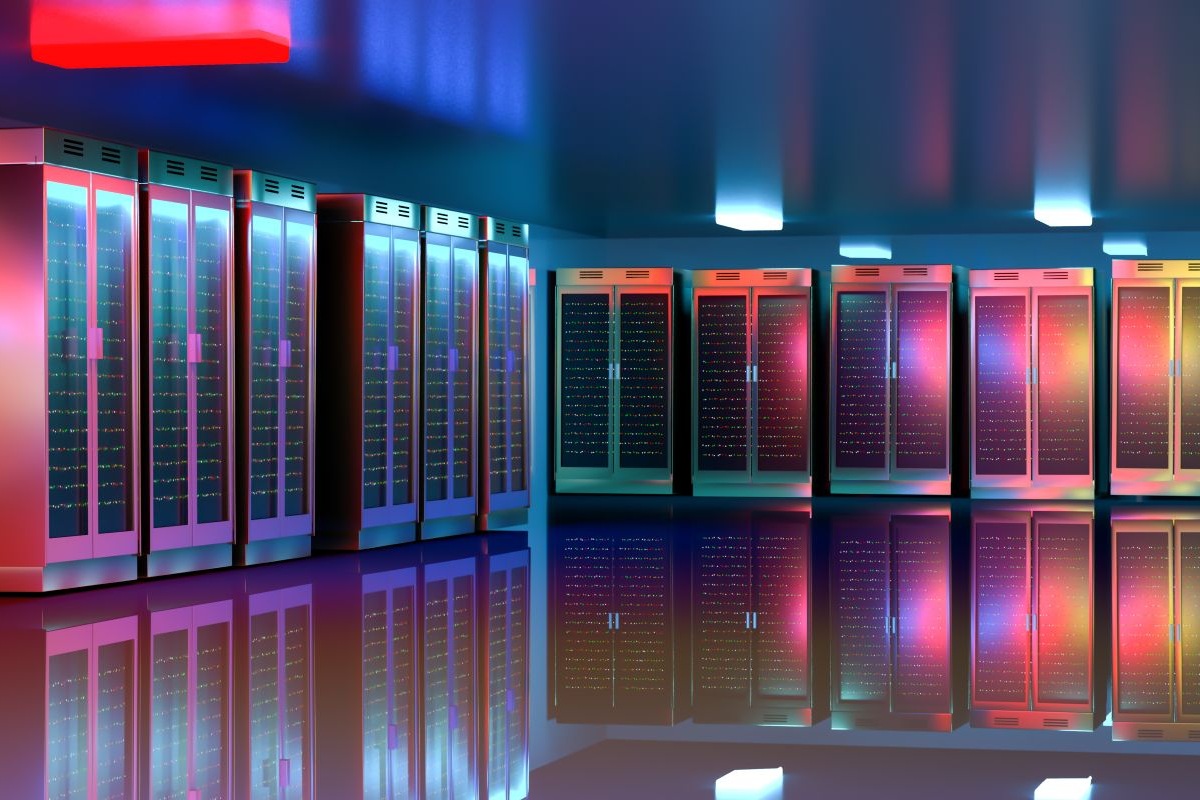Innovations in Data Center Power and Cooling Solutions
Data Centres
Innovations in Data Center Power and Cooling Solutions
News
ZTE urges industry to rethink energy efficiency
ZTE Corporation, a Chinese multinational telecommunications equipment and systems company, showcased its AI-embedded solution for data centre infrastructure at Data Centre World Frankfurt 2025.
As artificial intelligence becomes deeply integrated into every layer of enterprise and cloud computing, the foundation of digital infrastructure is undergoing a fundamental transformation. Speaking at the event, Hans Neff, Senior Director of the CTO Group at ZTE, delivered a keynote address that challenged traditional efficiency metrics and static data centre models. He emphasised that in an AI-driven future, conventional benchmarks such as Power Usage Effectiveness (PUE) are "no longer sufficient" to measure the performance and adaptability of modern data centres.
In his address, Hans highlighted the paradox facing today's data centres: at the very moment when sustainability has become a strategic priority, AI is driving up compute intensity and energy demand at an unprecedented scale. He believes traditional benchmarks, originally designed for static, legacy systems, are no longer capable of capturing the complexity and dynamism of AI-driven workloads. "AI workloads are fundamentally different," says Hans. "They're denser, hotter, and more variable. To stay ahead, we can’t keep optimising for a world that no longer exists."
ZTE says its approach, drawn from global deployments and internal R&D, envisions energy efficiency not as a fixed target, but as an evolving system. The company states that it is engineering data centres that sense, predict, and respond to changing computational demands in real time.
In his keynote address, Hans also called on the industry to adopt more holistic metrics that better reflect the realities of modern data environments. He proposed a new composite framework that evaluates energy use not only by its efficiency, but also by its effectiveness in supporting intelligent operations, resiliency, and sustainability. "PUE is no longer enough," argues Hans. "We need smarter metrics that account for how power is used — not just how much."
For more from ZTE, click here.
Joe Peck - 6 June 2025
Data Centres
Innovations in Data Center Power and Cooling Solutions
News
JTS opens second Idaho facility
JTS, a Mission Critical Group (MCG) company, has announced the opening of a new 172,000 ft² manufacturing facility on 14 acres in Nampa, Idaho, USA, known as JTS Nampa 1. The $55 million investment adds 140 jobs, doubles the company’s production capacity, and supports long-term economic growth in the region. MCG’s US-based manufacturing footprint now exceeds 1 million ft², reinforcing its commitment to building critical power infrastructure in America.
“This expansion marks a pivotal moment for JTS and the customers we serve,” says Greg Blake, President of JTS. “We’re doubling our capacity and accelerating our ability to deliver innovative, high-quality power solutions that keep critical infrastructure running. We’re proud to invest in the community and drive the next chapter of American manufacturing here in Idaho.”
JTS now operates three locations: Caldwell, ID; Nampa, ID; and Abilene, TX. JTS Nampa 1, located near the Caldwell facility, shares resources and was built using LEAN manufacturing principles.
“The new Nampa facility is more than an expansion – it’s a milestone in our mission to shape the future of American manufacturing,” comments Jeff Drees, CEO of Mission Critical Group. “It strengthens our ability to serve data centres, hospitals, utilities, and other critical infrastructure with dependable power solutions. We’re also proud that our shared ownership model gives employees a real stake in our success, aligning our growth with the prosperity of the people who power it.”
Due to ongoing investments in data centres, infrastructure, and advanced technologies, the United States' electricity demand is expected to increase by over 50% by 2050. Meeting this growing energy need will require innovative and resilient power and electrical system solutions.
Nampa Mayor Debbie Kling adds, “We’re proud to welcome JTS’s new facility to Nampa. This investment brings 140 quality jobs to our city and strengthens our local economy. It’s a great example of how strategic partnerships and innovation can fuel lasting impact in our community.”
A grand opening and ribbon-cutting celebration, including remarks and tours, will take place at the JTS Nampa 1 facility on 17 June 2025 from 12:00pm to 3:30pm MT.
For more from JTS, click here.
Joe Peck - 3 June 2025
Data Centres
Innovations in Data Center Power and Cooling Solutions
News
Eaton and Siemens Energy to join forces
Intelligent power management company Eaton, and Siemens Energy, one of the world’s leading energy technology companies, have announced a fast-track approach to building data centres with integrated onsite power. They intend to address urgent market needs by offering reliable, grid-independent energy supplies and standardised modular systems to facilitate swift data centre construction and deployment.
The collaboration will enable simultaneous construction of data centres and associated on-site power generation with grid connection and the integration of renewables to meet any regional regulatory requirements. This aims to provide data centre owners and developers with choices they don’t have at present to enable them to build and run new data centres.
Siemens Energy’s modular and scalable power plant concept is designed to be tailored to the specific needs of data centre operators. The standard configuration generates 500 megawatts (MW) of electricity featuring SGT-800 gas turbines, redundancy, and additional battery storage systems. Based on its modular approach, the size of the plant can be scaled up and down. In the future, it could also operate in a carbon-neutral manner, provided hydrogen is available and a part of the data centre’s sustainability strategy. The Siemens Energy concept also includes an optional emission-free, clean air grid connection to be installed either during construction or as a retrofit. This feature would enable data centres to provide grid services.
Eaton will provide customers with electrical equipment such as medium voltage switchgear, low voltage switchgear, UPS, busways, structural support, racks and containment systems, engineering services, and the software offerings needed to protect and enable IT loads from the medium-voltage grid to the chip, as well as help accelerate building and commissioning data centres with skidded and modular designs.
Cyrille Brisson, Global Segment Leader, Data Centers, Eaton, says, “Our approach of letting customers pick the right balance of energy sources is very flexible and construction to start-up time is swift, with options to reduce emissions in both the short and long term. Crucially, our approach offers data centre owners and developers the opportunity to build capacity and bring it online fast in any location where they have land available that is close to gas, water, and fibre.”
Andreas Pistauer, Global Head of Sales, Siemens Energy’s Gas Services Business Area, states, “We offer hyperscalers, co-locators, and investors a unique package, enabling them to reduce the time-to-market by up to two years in many places, which leads to significant revenue gains. Our power plant design is built with redundancy, eliminating the need for backup diesel generators and reducing CO2 emissions by about 50%.”
For more from Eaton, click here.
Joe Peck - 3 June 2025
Data Centres
Innovations in Data Center Power and Cooling Solutions
News
CyrusOne and E.ON announce strategic partnership
CyrusOne, a global data centre owner, developer, and operator, and E.ON, one of Europe's largest energy companies, today announced they have entered into a Preferred Partnership agreement to design and deliver local power generation solutions for data centres.
The companies’ Preferred Partnership agreement enables them to work together to unlock future energy projects in Frankfurt – Europe’s largest data centre hub which is currently constrained by limited grid capacity and connection delays – and more widely across the continent. In addition to local power generation, the Partnership will collaborate on grid support, power purchase agreements, and heat management. Fundamentally, the Partnership seeks to offer near term capacity for customers in important availability zones in gateway markets with delayed access to grid capacity.
The first initiative in the Partnership will see E.ON Energy Infrastructure Solutions (EIS) design a local power generation system, named E.ON IQ Energy Center, to supply CyrusOne FRA7, a hyperscale data centre in Griesheim, Germany.
This local power generation system will supplement the existing power supply to deliver an additional 61 megawatts of electrical output to the facility by 2029, expanding the campus to offer a further 45 megawatts of IT capacity to customers – bringing the FRA7 campus’ total IT capacity to 126 megawatts.
“We are thrilled to announce this Partnership with E.ON to provide customers with a runway to large scale growth without utility risk by 2029. By leveraging the complementary expertise of both companies to scale innovative technologies, we are creating a unique opportunity to offer growth capacity for customers in their most important markets,” says Matthew Pullen, Executive Vice President and Managing Director, Europe at CyrusOne. “Our scalable platform will set new industry standards for the integration of advanced energy solutions, offering a replicable model for future data centres and setting the pace for European innovation in sustainable infrastructure.”
“This Partnership brings together two industry-leading companies to accelerate a sustainable digital future, developing solutions that provide both power and cooling to the data centre and heat to the campus,” states Marten Bunnemann, CEO at E.ON Energy Infrastructure Solutions. “What sets this Partnership apart is its strategic depth: a long-term alliance built on shared vision, technical integration, and real benefits for customers and the wider community.”
CyrusOne’s FRA7 data centre forms part of the Frankfurt Westside campus, a 73-hectare commercial and industrial mixed-use regeneration project managed by BEOS AG and Swiss Life Asset Managers.
In line with CyrusOne’s sustainability goals, and as part of the ongoing partnership with BEOS and Swiss Life Asset Managers, the proposed local power generation solution also places energy efficiency and environmental responsibility at its core.
The solution is expected to become the first of its kind to include a baseload cooling integration via absorption chillers designed to convert exhaust heat from the power generation process into cooling for the data centre. This method is designed to increase overall system efficiency, reduce power consumption, and improve Power Usage Effectiveness (PUE).
E.ON’s generation system is designed to produce power, cooling, and heat through a combustion process which also qualifies CyrusOne to secure green certificates of origin. While natural gas will initially be used to fuel the plant, the system is designed to be hydrogen-ready and capable of operating with up to 25% hydrogen blended into the fuel mix, with the option to transition to 100% hydrogen through upgrades where demand exists.
The local power generation system is also engineered to enhance the quality and usability of the data centre’s waste heat by integrating exhaust heat from its absorption chiller, raising the output temperature by approximately 10°C.
For more from CyrusOne, click here.
Joe Peck - 2 June 2025
Data Centres
Innovations in Data Center Power and Cooling Solutions
News
ZincFive expands global reach with EMEA warehouse
ZincFive, a world leader in nickel-zinc (NiZn) battery-based solutions for immediate power applications, today announced a major milestone in its global growth strategy with the establishment of a new warehouse and service depot in Europe. The facility, operated in collaboration with Akkuteam Energietechnik GmBH, will support delivery of ZincFive batteries and spare parts across the EMEA region and beyond.
This certified customs warehouse enables transit of batteries and components through Europe, streamlining exports to non-EU countries such as those in the Middle East. It also aims to advance ZincFive’s sustainability goals by reducing shipping-related emissions and improving logistics efficiency.
The move comes in response to accelerating international demand for ZincFive’s nickel-zinc technology. With many European installations still relying on legacy lead-acid systems, there is a growing appetite for safer, more sustainable, and high-performance alternatives.
“This is more than a logistical move – it’s a signal of our long-term commitment to the EMEA market,” says ZincFive CEO Tim Hysell. “Our values of innovation, sustainability, and reliability are mirrored in this new partnership. With a facility designed for efficient, environmentally responsible battery logistics, we’re not just expanding our footprint – we’re doing it the right way. We’re investing where demand is real and growing – this isn’t speculative; it’s a response to the strong pull we’re seeing from European and Middle Eastern markets.”
Akkuteam, a family-run company with a 25-year history in backup power solutions, brings expertise in battery storage and handling, operating with a focus on quality and environmental stewardship.
Power demand is rising across sectors – and especially in data centres, including the fast-emerging AI segment. ZincFive's patented nickel-zinc chemistry seeks to deliver safe, sustainable, and high-performance energy storage and to challenge the dominance of lead-acid and lithium-ion batteries. The ZincFive BC Series UPS Battery Cabinets – including the latest BC 2–500 and BC 2–300X models – were developed with the aim to offer an industry-leading footprint while delivering greater power to meet the escalating demands of modern infrastructure.
For more from ZincFive, click here.
Joe Peck - 23 May 2025
Data Centres
Innovations in Data Center Power and Cooling Solutions
Eaton delivers energy savings in its new UPS
Eaton, an intelligent power management company, has announced the launch of its 9PX Gen2 5-11kW UPS, a new product that adds benefits to its 9PX solution through advanced technology upgrades and customer-centric enhancements. It seeks to deliver best-in-class power management and battery backup for critical equipment in data centres, distributed IT, edge networks, network closets, and server rooms. Eaton DPQ Product Line Manager Christophe Jammes comments, “Our latest UPS delivers market-leading efficiency of up to 97.2% in the 11kW unit thanks to innovative silicon carbide (SiC) components that not only use less power, and therefore cut energy bills, but also put operators one step ahead in emissions reduction. “When it comes to physical footprint,” he adds, “9PX Gen2 is the compact UPS that leads the way, delivering 11kW in just 4U. It offers an unmatched and Energy Star-qualified 11% more power in a space 33% smaller than its predecessor.” Every 9PX Gen2 UPS comes with a cybersecure Gigabit Network Card – enabling remote configuration, management, and upgrade of the entire UPS fleet, including full integration with Eaton’s Brightlayer Data Centers suite. Speaking of the product’s features, Christophe says, “In what we believe to be a UPS ’world first’, flexible ‘combo’ C39 outlets securely connect both C14 and C20 power cords – ending the guessing game of attempting to specify the required number of C13 (10A) and C19 (16A) outlets.” Predictive machine learning pinpoints timing for battery replacement by fast, convenient ‘hot swap’ – preventing unexpected downtime and the unnecessary expense of replacing batteries too soon. Optimised ABM+ charging also increases battery lifespan by up to 50%. 9PX Gen2 comes with a three-year warranty on electronic components and a two-year warranty on batteries (full three-year upon registration). There is also the option to extend coverage for the longer term to up to seven years of protection and support.
For more from Eaton, click here.
Joe Peck - 23 May 2025
Data Centre Infrastructure News & Trends
Data Centres
Innovations in Data Center Power and Cooling Solutions
News
Vertiv accelerates AI infrastructure evolution
Vertiv, a global provider of critical digital infrastructure, today confirmed its strategic alignment with NVIDIA’s announcement of an AI roadmap to deploy 800 VDC power architectures for the next generation of AI-centric data centres. Paving the way for future-ready designs, Vertiv’s 800 VDC power portfolio is scheduled for release in the second half of 2026 - ahead of NVIDIA Kyber and NVIDIA Rubin Ultra platform rollouts.
Vertiv aligns with the NVIDIA AI roadmap to stay one GPU generation ahead, enabling customers to deploy their power and cooling infrastructure in sync with NVIDIA’s next-generation compute platforms. Vertiv provides end-to-end power, cooling, integrated infrastructure and services to support AI factories and other data centre deployments.
As rack power requirements in AI environments scale beyond 300 kilowatts, 800 VDC enables more efficient, centralised power delivery by reducing copper usage, current, and thermal losses. Vertiv’s upcoming portfolio will feature centralised rectifiers, high-efficiency DC busways, rack-level DC-DC converters, and DC-compatible backup systems, expanding its broad, end-to-end power management portfolio that already includes a robust AC power train.
“As GPUs evolve to support increasingly complex AI applications at giga-watt scale, power and cooling providers need to be equally innovative to provide energy-efficient and high-density solutions for the AI factories. While the 800 VDC portfolio is new, DC power isn’t a new direction for us, it’s a continuation of what we’ve already done at scale,” says Scott Armul, Executive Vice President of Global Portfolio and Business Units at Vertiv.
“We’ve spent decades deploying higher-voltage DC architectures across global telecom, industrial, and data centre applications. We’re entering this transition from a position of strength and bringing real-world experience to meet the demands of the AI factory.”
Vertiv’s experience in DC power spans more than two decades of ±400 VDC deployments, broadened by strategic acquisitions during the early 2000s. These solutions support critical loads in global telecom networks, integrated microgrids, and mission-critical facilities. Vertiv says that this foundation establishes the company as a trusted leader in the safe design, deployment, and operation of higher-voltage DC architectures, with proven scale, portfolio, and long-term serviceability.
Designed for homogeneous AI zones in hyperscale environments, Vertiv’s 800 VDC portfolio is a key pillar of its 'unit of compute' strategy - a systems-level design engineered to enable all infrastructure components - to interoperate as one modular and scalable system, matching infrastructure demands of next-generation GPUs. Vertiv’s support for both AC and DC architectures is a strategic differentiator in the evolving AI data centre landscape.
For more from Vertiv, click here.
Simon Rowley - 19 May 2025
Data Centre Infrastructure News & Trends
Data Centres
Innovations in Data Center Power and Cooling Solutions
News
leagend UPS solution safeguards backup power supply
According to leagend Solutions, the backup power supply is the second heart of a data centre - and any issue that happens to it will cause huge economic losses or even disasters.
As a result, leagend's UPS battery management solution is a professional innovation exclusively developed for backup power applications such as data centres, telecom bases, and other applications seeking energy saving and renewable energy solutions. It guarantees the UPS batteries operate normally by monitoring and managing the key parameters of the batteries in real-time to ensure they supply stable power continuously under the accidence of a power outage.
Furthermore, it integrates with advanced technologies like data collection, data transfer and data processing to offer comprehensive monitoring, cloud storage, visualised data analyses and tailored services for customers.
Its capacity can be up to over 200 batteries with two different voltages simultaneously. In addition, leagend has integrated 5G and AI chips to the next-generation BMS.
– leagend Solutions has been specialising in researching and developing batteries technologies, battery testing technologies, battery monitoring and managing systems and solutions ever since the company’s establishment in 2014. Intelligence, precision, safety and low energy consumption are always the foundation and ideology of its technology research and development.
Until now, leagend Solutions has offered the following innovations: smart lead-acid battery testers, UPS battery monitoring solutions, lead-acid battery charger ODM solutions, Coulomb counter solutions, and more. The company’s battery products have been widely applied to multiple professional fields such as lead-acid battery manufacturing, data centre power supply chains, energy-saving, renewable energy, telecoms, and emergency backup power applications.
For more from leagend Solutions, click here.
Simon Rowley - 9 May 2025
Data Centre Infrastructure News & Trends
Data Centres
Hyperscale Data Centres: Scale, Speed & Strategy
Innovations in Data Center Power and Cooling Solutions
News
Techno Digital to power India’s digital infrastructure
Techno Electric & Engineering Company Ltd. (TEECL), one of India’s most trusted names in power infrastructure for over four decades, has officially launched Techno Digital Infra Pvt, its wholly-owned digital infrastructure arm.
Backed by an ambitious investment plan of $1 billion, Techno Digital plans an integrated network of hyperscale and edge data centres targeting a cumulative capacity of 250 MW spread across the country. This strategic move marks a transformative leap to revolutionise India’s digital economy, aligned with the Government of India’s flagship programme, Digital India.
Rooted in strong credentials of engineering, procurement and construction excellence, TEECL is leveraging its deep domain expertise in power infrastructure and sustainability to build an efficient, reliable, and eco-conscious network of data centres. The launch of Techno Digital underscores the Group’s vision to become a cornerstone in India’s data revolution - bringing scalable, secure, and low-latency digital infrastructure to metro and non-metro regions alike.
“The decision to enter the digital infrastructure space is both timely and visionary,” says Padam Prakash Gupta, Managing Director, Techno Electric & Engineering. “India’s data economy is poised for exponential growth, and with our legacy in power infrastructure and EPC, we see ourselves as natural enablers of this transformation. Techno Digital is not just a business venture - it’s a national mission to bridge the digital divide and power a truly connected India.”
The journey begins at Chennai, where Techno is building a 36 MW hyperscale data centre within SIPCOT IT Park, Siruseri. This Rated-3 facility spans approximately two Lakh square foot, houses up to 2,400 racks, and integrates renewable energy with Battery Energy Storage Systems (BESS) for continuous sustainability, adiabatic cooling for water efficiency (WUE), 25% green cover and a facility design PUE of 1.35. Future locations for hyperscale facilities include Kolkata and Noida, positioning Techno Digital as a key player in supporting India’s digital growth.
“We are not just building data centres, we are powering India’s digital revolution,” adds Amit Agrawal, President, Techno Digital. “Our hybrid strategy integrating hyperscale and edge will redefine how data is hosted, processed, and delivered. Whether it’s AI, OTT, fintech, or governance, our infrastructure is designed for the next decade of digital growth. We are empowering our ecosystem partners to offer unique solutions around cloud, security and managed services, thereby ensuring cutting edge technology’s ubiquitous availability and affordability.
As part of its nation-building vision, Techno has partnered with RailTel Corporation of India, a Government of India enterprise under the Ministry of Railways, to develop edge data centres in 102 cities across 23 Indian states. This landmark project will be the largest deployments of its kind, bringing low-latency computing closer to users in Tier 2 and Tier 3 cities, empowering sectors such as AI, BFSI, telecom, OTT, e-sports, healthcare, e-governance, and manufacturing.
“This partnership with RailTel embodies our core belief that digital infrastructure should be democratised to transform India into a digitally empowered society and knowledge-based economy,” says Ankit Saraiya, Director & CEO, Techno Electric & Engineering. “From AI workloads and 5G to cloud-native applications, we’re enabling India to process data where it’s consumed, reducing latency, energy use, and cost. Our edge deployment model is not just technically superior, it’s a complete ecosystem that encompasses all aspects of a digital infrastructure. We are honoured to be RailTel’s trusted partner in this national mission.”
Simon Rowley - 7 May 2025
Data Centre Infrastructure News & Trends
Data Centres
Innovations in Data Center Power and Cooling Solutions
News
Mission Critical Group acquires DVM Power + Control
Mission Critical Group (MCG), a provider of innovative products specialising in design, manufacturing, delivery and service of electrical system solutions, has announced that it has acquired DVM Manufacturing (DVM Power + Control), a manufacturer of low- and medium-voltage electrical distribution equipment.
The acquisition significantly expands MCG’s manufacturing footprint and service capabilities in electrical systems for data centres, industrial facilities and other mission critical applications.
With 350,000 square feet of production space in Pennsylvania, Georgia, and Connecticut, DVM expands MCG’s footprint to over one million square feet of manufacturing capacity. The acquisition also strengthens MCG’s field services, drives innovation, and enhances technical expertise by adding DVM’s skilled workforce, providing customers with more solutions and stronger support.
DVM designs and produces low- and medium-voltage electrical distribution equipment, including switchboards, switchgear, relay panels, power distribution units (PDUs), bypasses, power/cooling module 'skid' manufacturing and control systems. Its Naugatuck, Connecticut facility specialises in retrofits, breaker rebuilds and switchgear modernisation, further bolstering MCG’s services and power offerings.
“DVM’s expertise advances MCG’s manufacturing and aftermarket services, driving growth and customer satisfaction for our innovative, high-quality solutions,” says Jeff Drees, CEO of Mission Critical Group. “With DVM’s added capacity and technical strengths, we are also expanding our geographic reach, boosting product development and optimising power service offerings to better support data centres and other mission critical environments.”
Robert Ricci, CEO of DVM Power + Control, adds, “This partnership is a natural fit, built on a shared commitment to innovation, excellence and customer value. Having worked with MCG’s leadership for 30 years, I can attest to their deep industry knowledge and strategic expertise. This collaboration expands our resources, enhances engineering capabilities and improves career growth, ensuring a stronger future for our team.”
DVM will operate as a Mission Critical Group Company alongside JTS and Point Eight Power, continuing to elevate MCG’s leadership in electrical system solutions. As part of the transition, Ricci will continue to lead DVM as its President and oversee MCG’s low- and medium-voltage electrical equipment manufacturing.
With five acquisitions in two years, MCG says that this latest addition marks another milestone in its rapid growth, while reinforcing its commitment to innovation and excellence in mission critical solutions.
For more from Mission Critical Group, click here.
Simon Rowley - 25 April 2025

Head office & Accounts:
Suite 14, 6-8 Revenge Road, Lordswood
Kent ME5 8UD
T: +44 (0)1634 673163
F: +44 (0)1634 673173
